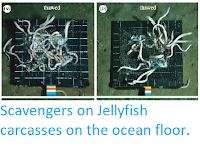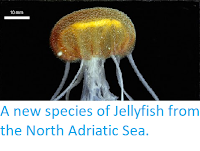A ten-year-old Russian boy has been treated in hospital after being stung by a Box Jellyfish while swimming off Lamai Beach on Koh Samui (Samui Island) in Surat Thani Province, Thailand, on Wednesday 30 October 2019. He is reported to have been the eighth person stung off the island this year, slightly lower than most years. Blooms of Box Jellyfish are a common occurrence in the Gulf of Thailand between July and October, and present a regular threat to bathers, with
eight recorded deaths in Thailand's coastal provinces since 1999 (the most recent death on Koh Samui was a German Tourist in 2015), and
hundreds of people being stung each year. People stung by a Box
Jellyfish are recommended to leave the water immediately and treat the
sting with vinegar, which should be poured on but not rubbed, before
seeking medical attention. Lamai Beach is protected by Jellyfish nets, which reduce the number of Jellyfish getting into tourist areas, and has first aid posts with vinegar available at regular intervals.
Ten-year-old Russian tourist being treated for a Box Jellyfish sting in Thailand this week. The Thaiger.
Most Box Jellyfish encountered in Thai waters belong to the species Chironex flecker,
sometimes known as the Sea Wasp, which is endemic to shallow coastal
waters and which has a particularly potent sting, with an adult of the
species producing enough venom to kill around adult Humans, which makes
them a common cause of fatalities from Southeast Asia to Australia. Box
Jellyfish are particularly dangerous as they do not simply drift
passively as other Jellyfish do, but posses well developed eyes,
muscular and nervous systems, allowing them to actively hunt small prey,
and sometimes (probably inadvertently) attack Humans.
See also...
Follow Sciency Thoughts on Facebook.




























